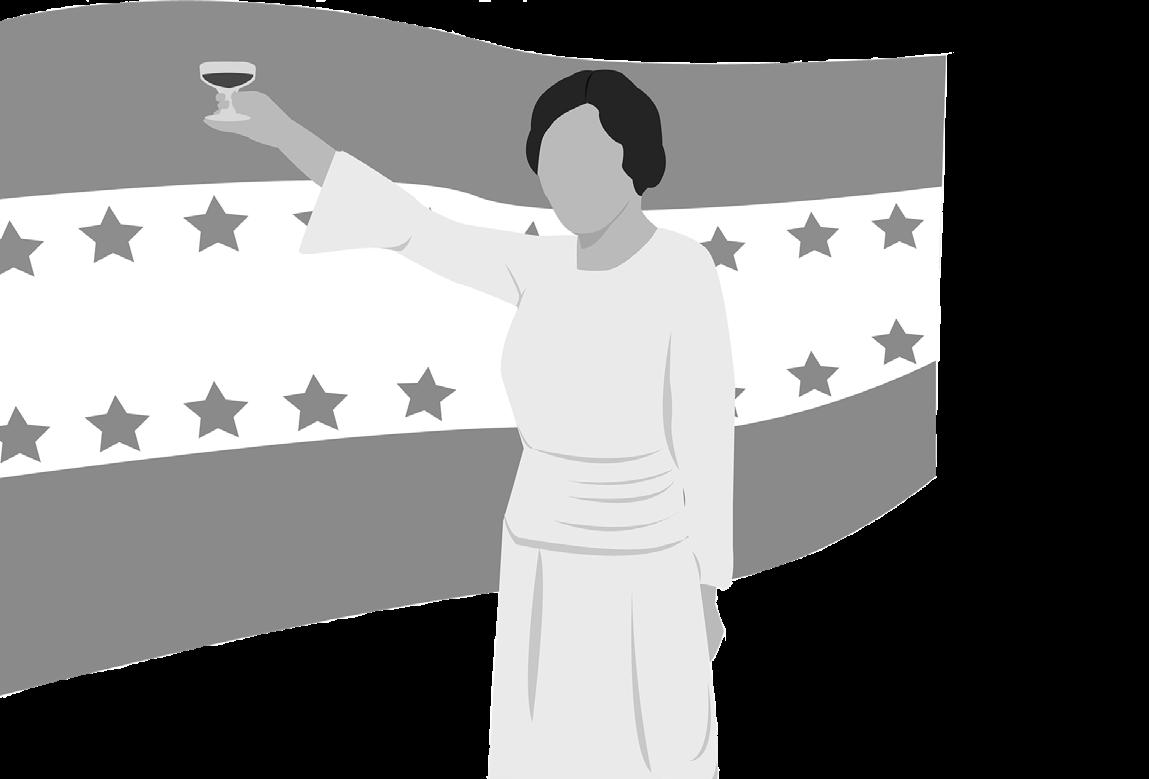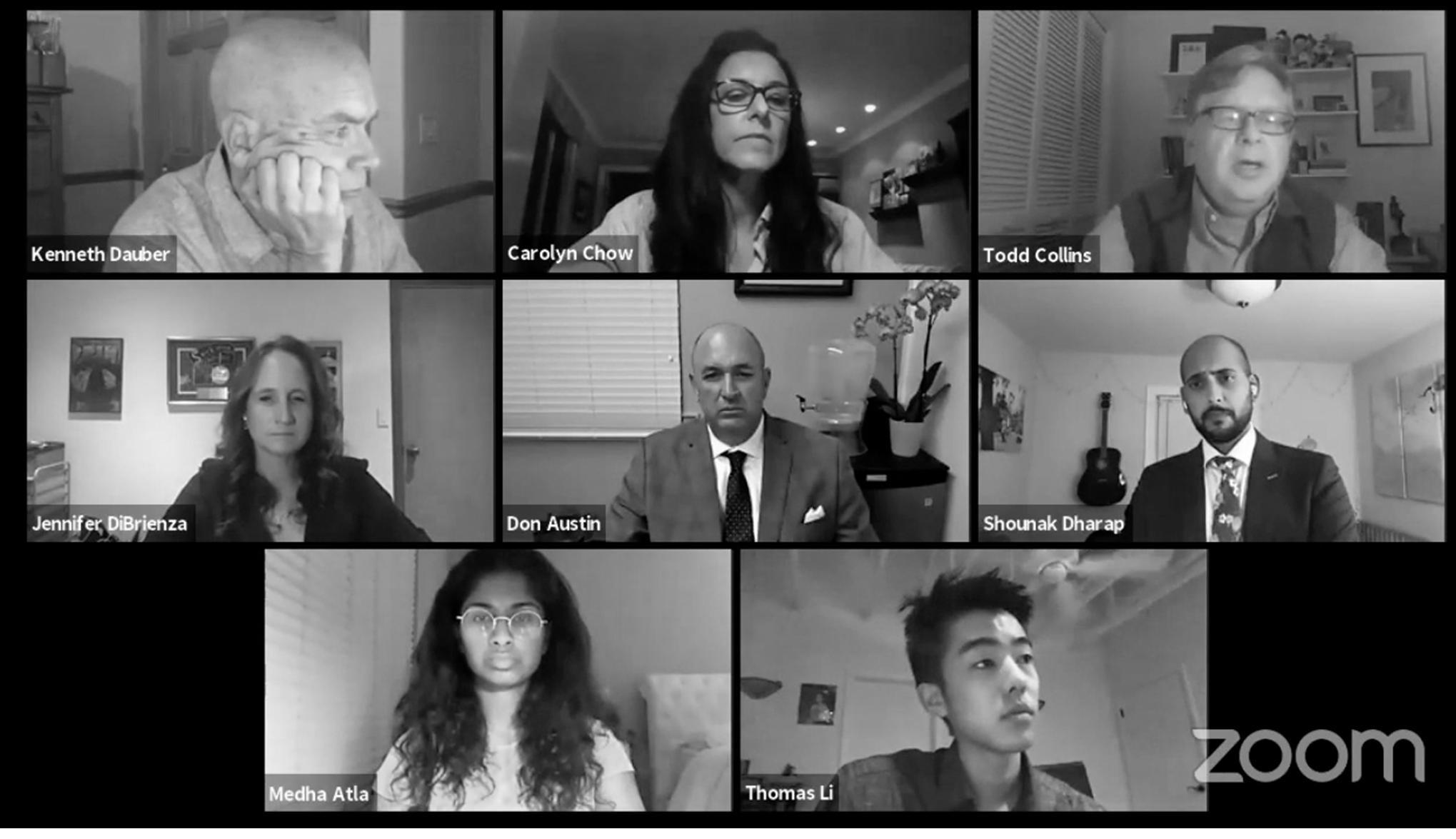A Century of Women Voting
100TH ANNIVERSARY OF THE 19TH AMENDMENT Text by PAISLEY ANNES, MERWA MAROF and ABIMBOLA BOLARINWA
W
Art by LAUREN YAN
AVING LARGE AMERICAN FLAGS, women celebrate with homemade megaphones and smiling faces. The photo captures the moment when the ratification of the 19th Amendment was announced. Their spirit was echoed by many across the United States. While the ratification of the 19th amendment was a big step forward for women’s rights, women of color were largely excluded from this milestone. African American women were barred from the polls — especially in areas where Jim Crow laws were prominent — and many were unable to cast a vote until the Voting Rights Act of 1965. “We still have areas in America that have struggled to find their way to vote because they have strategically been violated by not being able to get to a voting location to vote, and these are often communities of color,” said Nancy Shepherd, president of the Palo Alto League of Women Voters. Over the past century, women’s impacts in politics can be seen in numerous milestones — such as the first female governor being elected into office, the first female U.S. Supreme Court justice swearing in and a woman coming closer to becoming president than ever before. These women and their drive to pursue careers in politics even when all odds are stacked against them must be celebrated and admired as we, 100 years later, continue the fight for women’s equality. v
1923
Equal Rights Amendment introduced
1973
Roe v. Wade
After being granted the right to vote, Alice Paul, a suffragist, feminist and women’s rights activist, announced her campaign to ratify the Equal Rights Amendment. Women needed to be constitutionally equal to men on all counts. The ERA would secure women’s rights under the Constitution, declaring that no rights should be denied on the basis of sex. Congress voted on the amendment and passed it to the states for the ratification process in 1972 — to become an amendment, the ERA required ratification from 38 states. An initial deadline of seven years was placed and then extended to 10 years. Just short of three states, the ERA failed to pass. The efforts to ratify are not over. Activist groups are still rallying in the remaining states to ratify the amendment. If Congress extends the time limit and the three remaining states vote in favor of the amendment, a possible 28th Amendment could be added to the U.S. Constitution.
With the resurgence of the women’s movement came the issue of abortion rights in the case of Roe v. Wade. The case secured the right to abortion with a majority vote among the Supreme Court of 7-2 in 1973. Norma McCorvey brought federal action against the district attorney of Dallas County after being denied the right to obtain a safe abortion in her own home. The Supreme Court ruled in favor of McCorvey according to the fundamental right to privacy found in the Ninth Amendment. Other cases limiting the scope of Roe v. Wade followed, and the topic has fluctuated in and out of the political limelight ever since. While the Supreme Court does not have any cases threatening to overturn Roe v. Wade in the upcoming term, abortion activists on both sides are still relentless in their fights. Pro-Choice America is hosting many virtual gatherings, including the Silicon Valley Peninsula Power Of Choice event, to spread awareness about their cause.
18 OCTOBER 2020




















